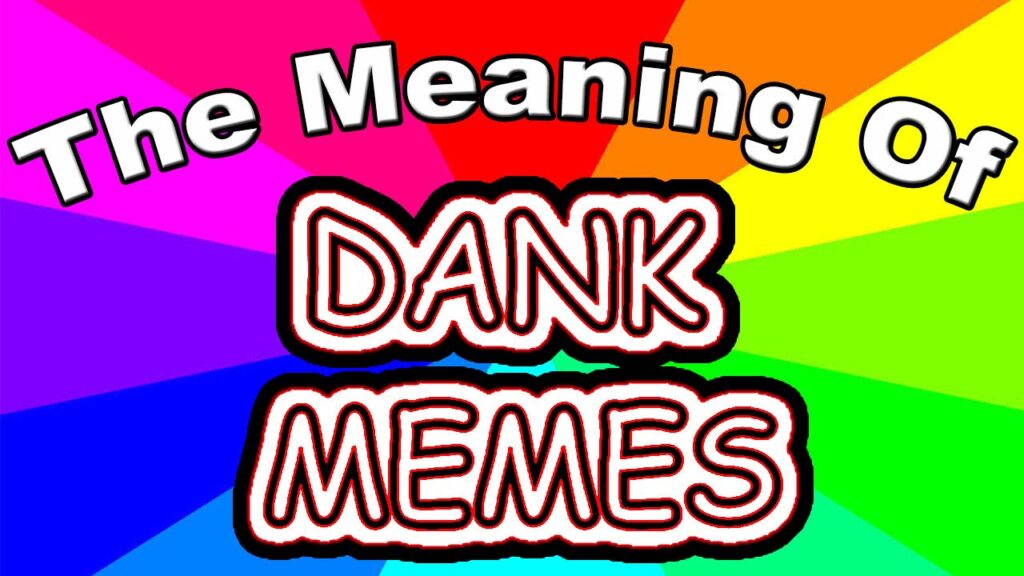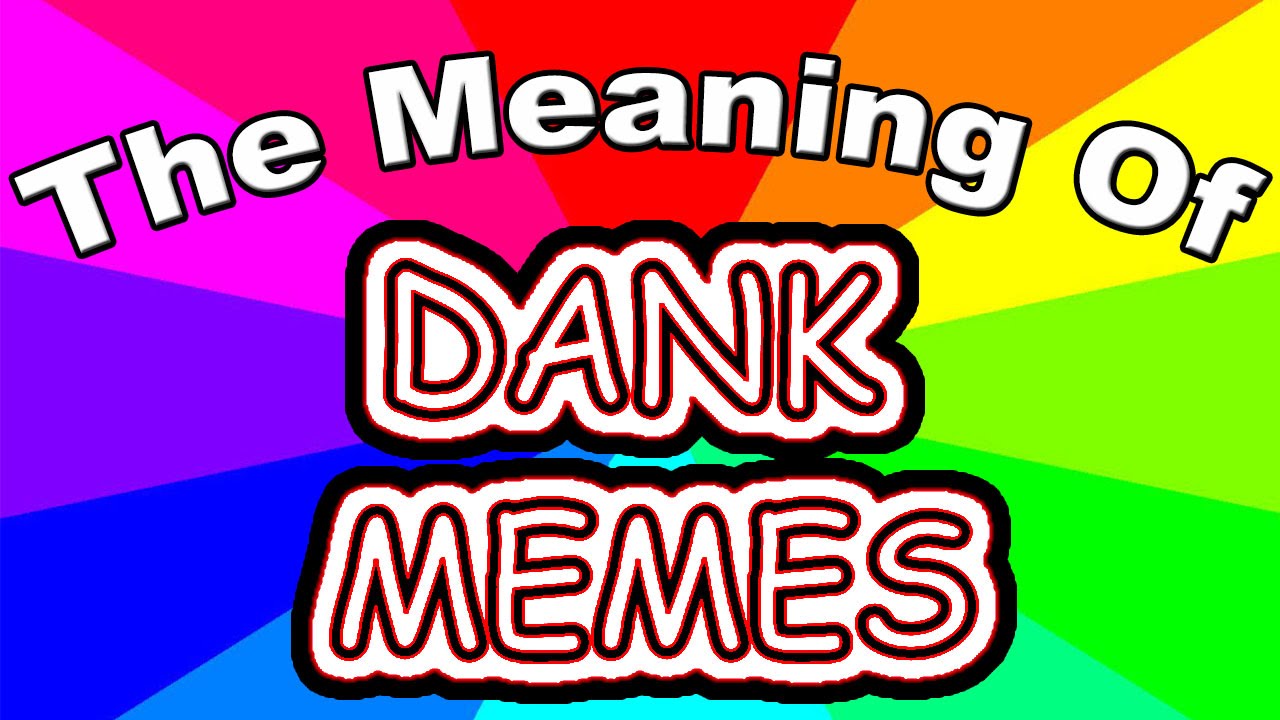
Dank Memes: A Deep Dive into Internet Humor and its Cultural Impact
In the ever-evolving landscape of internet culture, few phenomena have proven as enduring and influential as dank memes. These aren’t your average, run-of-the-mill jokes; dank memes represent a unique form of online humor, often characterized by their absurdity, irony, and self-awareness. This article aims to explore the origins, evolution, and cultural significance of dank memes, examining their impact on online communities and their reflection of contemporary society.
The Origins of Dank Memes
The term “dank” in the context of memes originated in the early 2010s, primarily within online communities like Reddit and 4chan. Initially, “dank” was used to describe memes that were considered overused, stale, or simply unfunny. Ironically, this negative connotation became a badge of honor, as users began to embrace and even celebrate the absurd and nonsensical nature of these so-called “dank memes.” The more bizarre and unconventional a meme was, the more likely it was to be labeled as “dank.”
One of the key characteristics of early dank memes was their meta-awareness. They often referenced themselves, acknowledging their own artificiality and the cyclical nature of internet trends. This self-referential humor distinguished dank memes from more traditional forms of online comedy.
Evolution of Dank Memes
Over time, dank memes have evolved significantly, adapting to changing internet trends and emerging platforms. What started as a niche subculture has gradually permeated mainstream online culture, influencing everything from social media marketing to political discourse. Several factors have contributed to this evolution:
- Platform Diversification: As internet users migrated from forums like Reddit and 4chan to more mainstream platforms like Twitter, Instagram, and TikTok, dank memes followed suit. This expansion broadened their reach and exposed them to a wider audience.
- Increased Accessibility: The proliferation of meme generators and editing tools has made it easier than ever for individuals to create and share dank memes. This democratization of meme creation has fueled the rapid spread of internet humor.
- Cultural Appropriation: Like many aspects of internet culture, dank memes have been subject to cultural appropriation. As they’ve become more mainstream, they’ve often been divorced from their original context and used in ways that can be insensitive or offensive.
Characteristics of Dank Memes
While the definition of a dank meme can be subjective, there are several recurring characteristics that distinguish them from other forms of online humor:
- Absurdity: Dank memes often embrace the nonsensical and illogical. They frequently feature bizarre imagery, surreal situations, and unexpected juxtapositions.
- Irony: Irony is a key element of dank meme humor. They often subvert expectations, satirize cultural norms, and mock the very concept of memes themselves.
- Self-Awareness: Dank memes are acutely aware of their own artificiality and the cyclical nature of internet trends. They frequently reference themselves and acknowledge their status as ephemeral online phenomena.
- Niche References: Many dank memes rely on obscure or niche references that are only understood by a small subset of internet users. This exclusivity can contribute to their appeal, creating a sense of belonging among those who “get it.”
The Cultural Impact of Dank Memes
The impact of dank memes extends far beyond simple entertainment. They have become a powerful force in shaping online culture, influencing communication, and reflecting societal values. Here are some of the key ways in which dank memes have impacted culture:
Communication
Dank memes have become a form of shorthand communication, allowing individuals to express complex emotions and ideas in a concise and often humorous way. They can be used to convey sarcasm, irony, or even genuine sentiment, depending on the context. [See also: The Evolution of Internet Slang] This ability to communicate quickly and effectively has made dank memes an integral part of online discourse.
Social Commentary
Dank memes often serve as a form of social commentary, offering satirical critiques of current events, political figures, and cultural trends. By using humor to highlight absurdities and contradictions, dank memes can spark conversations and raise awareness about important issues. However, it’s important to note that the effectiveness of dank meme-based social commentary can vary depending on the audience and the context.
Community Building
Sharing and creating dank memes can foster a sense of community among like-minded individuals. Online communities dedicated to dank memes provide a space for users to connect, share their creations, and bond over their shared sense of humor. These communities can be a valuable source of social support and connection, particularly for individuals who feel marginalized or isolated in the real world.
Marketing and Advertising
Businesses and organizations have increasingly recognized the potential of dank memes as a marketing tool. By incorporating dank memes into their advertising campaigns, companies can reach a younger, more tech-savvy audience and create a sense of authenticity and relatability. However, it’s crucial for brands to approach dank meme marketing with caution, as a misstep can easily backfire and damage their reputation. [See also: Viral Marketing Strategies for the Digital Age] The key is to understand the nuances of dank meme culture and to avoid being perceived as inauthentic or exploitative.
Criticisms of Dank Memes
Despite their popularity and influence, dank memes are not without their critics. Some common criticisms include:
- Obscurity: The reliance on niche references and inside jokes can make dank memes inaccessible to those who are not familiar with internet culture.
- Offensiveness: Dank memes often push boundaries and can be offensive to some individuals or groups. The use of dark humor, irony, and satire can be easily misinterpreted, leading to misunderstandings and hurt feelings.
- Ephemerality: The fleeting nature of internet trends means that dank memes often have a short lifespan. What is considered funny today may be forgotten or outdated tomorrow.
- Cultural Appropriation: As mentioned earlier, dank memes are often subject to cultural appropriation, which can be harmful and disrespectful to marginalized communities.
The Future of Dank Memes
It’s difficult to predict the future of dank memes with certainty. However, it’s likely that they will continue to evolve and adapt to changing internet trends. As new platforms emerge and online culture continues to evolve, dank memes will likely find new ways to express themselves and influence online discourse. [See also: The Future of Internet Culture] One thing is certain: dank memes have left an indelible mark on internet culture and will continue to be a source of humor, social commentary, and community building for years to come. The ironic, often absurd nature of dank memes provides a unique lens through which to view and critique the world around us. Whether you love them or hate them, dank memes are an undeniable force in the digital age. The ongoing evolution of the dank meme showcases the dynamic and ever-changing nature of online humor. Understanding the origins and characteristics of dank memes provides valuable insight into the complexities of internet culture. The widespread popularity of dank memes highlights the power of humor to connect people and foster a sense of community. The use of dank memes in marketing and advertising demonstrates their potential as a tool for reaching younger audiences. The criticisms of dank memes underscore the importance of being mindful of their potential to be offensive or exclusionary. Ultimately, dank memes represent a unique and influential form of online expression that reflects the ever-evolving landscape of internet culture. Another key aspect is the constant change and adaptation, ensuring the survival of dank memes. The internet is constantly changing, and so are the dank memes that populate it.

